Publications
Previewed below is the full list of books, video essays and online/journal publications produced by the IntermIdia Project.
Books/Catalogues
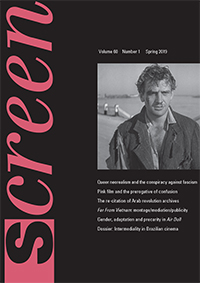 |
Screen Dossier, Volume 60, Issue 1, Spring 2019 The entirity of the first of 2019s Screen Dossier was written by IntermIdia Project colleagues. It features 5 articles: Intermediality in Brazilian cinema: the case of Tropicália Introduction by Lúcia NagibStefan Solomon, Devouring images: Hélio Oiticica’s anthropophagic quasi-cinemaby by Alison Butler, ‘The cloak of technicolor’: intermedial colour in Antônio das Mortes by Stefan Solomon, Between film and photography: the bubble of blood in ‘The Family of Disorder’ by Albert Elduque, and Multimedia identities: an analysis of ‘How Tasty Was My Little Frenchman’ by Lúcia Nagib. |
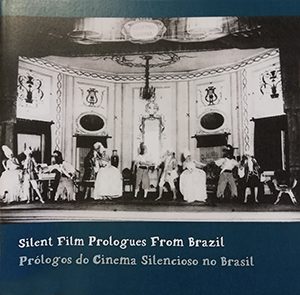 |
Silent Film Prologues From Brazil (2019) The first restaging of the Brazilian movie prologues took place on 30 June 2018 at Museu da Imagem e do Som (MIS-SP), by the theatre troupe Companhia Antropofágica. At the Minghella Studios on the 6th and 7th of December, UK audiences experienced the restaging of two Silent Movie Prologues, together with a screening of the films they were designed to accompany: Buster Keaton’s wonderful comedy feature Go West (US, 1925) and the surviving fragment of another extraordinary 1920s film, Beggar on Horseback (US, James Cruze, 1925). The event featured an accompanying catalogue produced by Prof. John Gibbs and Prof. Luciana Corrêa de Araújo. Available on request (l.nagib@reading.ac.uk). |
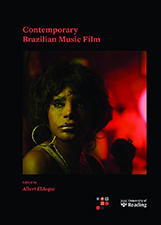 |
Contemporary Brazilian Music Film (2018) The full PDF of Albert Elduque Busquets’ catalogue, ‘Contemporary Brazilian Music Film‘, is now available for free here. The PDF has one small section omitted. The printed and bound catalogue itself is not available for purchase. There are some printed copies available however; if you are interested in acquiring one of these, please contact intermidia@reading.ac.uk. |
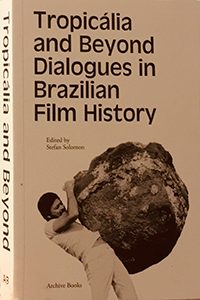 |
Tropicália and Beyond (2017) We are pleased to announce that Stefan Solomon’s introduction to Tropicália and Beyond: Dialogues in Brazilian Film History (Berlin: Archive Books, 2017) is now available as a free download! If you like what you read here, please consider purchasing the collection of 22 essays, interviews, and manifestos through Archive Books. The season also came with an accompanying catalogue, available on request (l.nagib@reading.ac.uk). 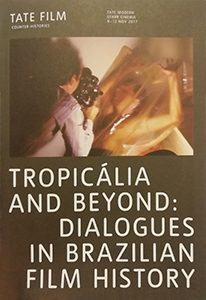 |
Online/Journal publications/Video Essays
2019
 |
Multimedia identities: an analysis of How Tasty Was My Little Frenchman Lúcia Nagib,Screen, 60 (1), 2019 This essay draws on tropicalist intermediality as a means to gain a deeper insight into the political contribution made by the film How Tasty Was My Little Frenchman, directed in 1970 by Cinema Novo exponent, Nelson Pereira dos Santos, and first screened in 1971. I argue that, beyond the film’s sensational focus on cannibalism, its intermedial relations, under the influence of Tropicalism, bring about a new dimension of hybridity and transnationalism hitherto absent from the Cinema Novo agenda. How Tasty Was My Little Frenchman presents a distinctive multiperspectival structure derived from the self-revealing and self-standing form in which its raw materials are shown. For example, Hans Staden’s book was not only a source for the fictional plot, but actual chunks of its text are displayed, alongside sixteenth-century drawings, letters, poems, decrees and testimonials by French and Portuguese colonizers, in the form of title cards or voiceover commentary, often in contradiction with the images and between themselves, thus multiplying the narrative layers that preserve their own, original semantic agency. This Tropicália-inspired multimedia procedure not only disregards the attachment to medium specificity that had hitherto characterized political cinema in Brazil, but also deconstructs the unified figure of the auteur, held as the supreme creator in the early Cinema Novo days. I examine the possible political utopia contained in the film’s hybrid form, which opens up to a supranational view of the world in which humans, whatever their origin or standing, become mere vessels of their cultural capital. |
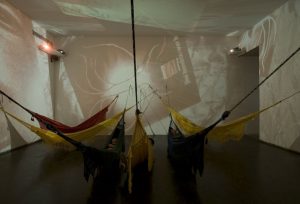 |
Devouring images: Hélio Oiticica’s anthropophagic quasi-cinema Alison Butler, Screen, 60 (1), pp. 128-136 (2019) Between 1970 and 1978, while living in New York City, the Brazilian artist Hélio Oiticica, working with filmmaker Neville d’Almeida, conceived a series of projected image installations entitled Cosmococas. This essay considers these works in relation to their historical moment, as an alternative conception of expanded cinema, influenced by North American practices but inflected by Oiticica’s own cultural formation and his engagement with the Tropicália movement. Key to this alternative conception is Oiticia’s use of separate media elements which interrelate via the body of the spectator, and his use of still images, to which, like his parangolés (capes, banners and tents made from layers of painted fabric and other materials) the spectator-performer brings movement. In contrast to the North American conception of expanded cinema as immersive multimedia, Oiticica theorized his work as ‘quasi-cinema’, a fragmentary form that explodes film into ‘moment-frames’, negating ‘the unilateral character of cinema spectacle’ in order to create a space for active participation of a kind not normally associated with cinema. Across a variety of his writings, including theoretical texts and personal correspondence, Oiticica repeatedly describes media as ‘devouring’. Writing about the television set included in his Tropicália installation, he describes a ‘terrible feeling […] of being devoured by the work’. The inclusion in the Cosmococas of images of cultural icons who died at the height of their fame – Jimi Hendrix and Marilyn Monroe – resonates with this notion of mass media devoration. The intermedial strategies deployed by Oiticica in his quasi-cinema projects are essentially anthropophagic, absorbing North American media images and forms as a way of preventing the culture of his host nation from devouring him. |
 |
Introduction to the dossier: Brazilian cinema in the neoliberal age (O cinema brasileiro na era neoliberal). Lúcia Nagib, RL Sousa, AS Brandão, Aniki: Portuguese Journal of the Moving Image, 5 (2), pp. 306- 310, 2019 O fim dos regimes autoritários e a instauração de democracias neoliberais na América Latina, na virada entre as décadas de 1980 e 90, deu margem ao renascimento cinematográfico em vários países da região, notadamente Argentina, México e Brasil. As razões desse fenômeno (chamado de “Retomada do Cinema Brasileiro” no Brasil) foram diversas, entre elas a explosão de escolas de cinema na Argentina; a privatização dos meios de produção no México; a redistribuição dos recursos da extinta Embrafilme pelo Prêmio Resgate do Cinema Brasileiro e a introdução da Lei do Audiovisual em 1993, no Brasil (Dennison, Nagib e Shaw 2003). Continue reading… |
 |
Passages: travelling in and out of film through Brazilian geography Lúcia Nagib, Rumores: Revista Online de Comunicação, Linguagem e Mídias, 24 (12), pp. 19-40., 2019. ISSN 1982677X A relação entre o cinema e o real é provavelmente a questão mais central e complexa nos estudos cinematográficos. Neste artigo, tentarei abordar esta questão por meio da análise de uma seleção de filmes em que dispositivos intermidiáticos, isso é, o emprego no interior do filme de formas artísticas como pintura, teatro e música, parecem funcionar como uma “passagem” para a realidade política e social. Para tanto, irei focalizar casos exemplares da produção de São Paulo e Pernambuco, representados por filmes de Beto Brant, Cláudio Assis, Tata Amaral, Paulo Caldas e Marcelo Luna, a fim de demonstrar os valores compartilhados por eles em determinado contexto histórico e os laços geográficos que estabeleceram através do Brasil. |
 |
Introduction to dossier: Intermediality in Brazilian cinema: The Case of Tropicália Lúcia Nagib, Stefan Solomon, Screen, 60 (1), 2019 The contributors to this proposed dossier are investigators on the AHRC-FAPESP funded Intermidia Project, which explores the uses and possible advantages of intermediality as a historiographic method applicable to cinema in general, and Brazilian cinema in particular. The choice of the artistic movement known as ‘Tropicália’ or ‘Tropicalism’ as the dossier’s common thread is due, in the first place, to its strong reliance on intermediality. This short-lived movement, stretching for a few years between the late 1960s and the early 1970s, unleashed a veritable artistic and political earthquake whose aftershocks can be felt up to today, as testified by the multiple celebrations of the movement’s 50th anniversary in 2017 taking place all over the world. |
 |
Between film and photography: the bubble of blood in ‘The Family of Disorder’ Albert Elduque Busquet, Screen, 60 (1), 2019 Founded within the context of the Brazilian military dictatorship, the film company Belair was one of the most radical attempts to cultivate a cinema in the spirit of Tropicalism: its works are distinguished by parodies of genre filmmaking, a carnivalesque celebration of the body, and a profound investment in subversive politics. Led by filmmakers Rogério Sganzerla and Júlio Bressane and actress Helena Ignez, Belair produced six films between January and March 1970, when the team was forced into exile. A Família do Barulho/The Family of Disorder, directed by Bressane, contains one of the most striking sequences in all of Belair’s productions. Its portrait of a nuclear family in constant tension ends up with the three main characters looking straight into the camera and suffering in front of an unknown, invisible danger: a young man has a wound on his face; another covers his face with his hands in a liminal state; and a woman, played by Ignez, vomits a bloody slobber. Following Brigitte Peucker’s exploration of the relationship between cinema’s impurity, stillness and the cinematic body, as well as Raymond Bellour’s analysis of some dispositifs that anticipated the movement of cinema from the immobility of death, I argue that these images exist in a territory between different media, and between life and death: they are intersections of the liberating dynamism of cinema and the enforced stillness of photography, which evokes police mugshots, the menace of firing squads, and the ghostly quality of wax figures. I focus particularly on the case of Ignez and her bloody mouth, which chime with the tropicalist exploration of the grotesque and the intermedial quality of the cinematic body. |
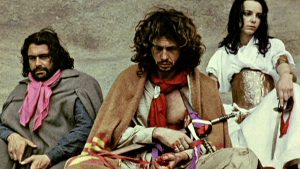 |
‘The cloak of technicolor’: intermedial colour in Antônio das Mortes Stefan Solomon, Screen, 60 (1), 2019 While shooting O dragão da maldade contra o santo guerreiro/Antônio das Mortes in 1969, Glauber Rocha turned to colour film. Although it was not the first time he had worked with colour, here the director made special use of Eastmancolor technology in bringing to life the world of Deus e o diabo na terra do sol/Black God, White Devil (1964) that had previously appeared only in black-and-white. In his earlier manifesto, The Aesthetics of Hunger’ (1965), Rocha had suggested that the cloak of technicolor’ would not conceal Brazil’s social problems, but would rather aggravate them; in this context, his use of colour does not appear as a simple capitulation to the allure of foreign productions, but instead as part of an even deeper concern for the plight of his nation. While in part motivated by the potential to depict his country with an even greater degree of accuracy, Rocha also pointed to the similarities between film and painting in making the switch to colour, and professed an interest in the visual integration of colour with music and dance’. The intermedial comparison is an intriguing one, especially considering that while filmmakers like Rocha were reaching for a greater sense of realism, visual artists in Brazil like Helio Oiticica were following a more conceptual trajectory where colour was concerned. In this environment, emergent forms of chromatic stock in Brazilian cinema in the late-1960s captured both the non-representational and realist aspects of colour, its supplementarity and its indexical connections to the world. Following recent work on intermediality and colour by Sarah Street and Joshua Yumibe, this article considers how the use of new colour technology in Glauber Rocha’s filmmaking resonated with certain tropicalist notions about the clash of the archaic and the modern in Brazilian cultural and political history. |
2018
 |
Rite of Passage: Renée Nader Messora and João Salaviza’s “The Dead and the Others” Stefan Solomon, Kinoscope (2018)In the cosmologies of indigenous Brazilian societies, the shaman occupies a privileged position, standing as a vector connecting the living with the dead, human with non-human worlds. For the Krahô people who inhabit the northeast area of the state of Tocantins, the shaman is unique in his ability to sense the presence of mecarõ (spirits), to cure sickness, and to place curses upon his enemies. Continue reading… |
 |
Of Mechanisms and Machines: Brazil’s New New Cinema/Sobre máquinas y mecanismos: El nuevo Nuevo Cine brasileño Stefan Solomon, Revista Icónica (2018)To think of Brazil today is to think foremost of a country in a state of crisis, or indeed of a country that has been in a state of perpetual crisis since at least 2013: politically, economically, socially. In the midst of this turmoil, and in the wake of the pivotal 2018 elections, the national cinema appears to be surprisingly healthy: the number of Brazilian feature films has almost doubled (from 84 in 2009 to 158 in 2017); an abundance of independent domestic festivals showcase works from their own country more fervently than most; and on the world stage, 23 films from Brazil screened at Rotterdam this year, while eight competed in the Berlinale. Continue reading… |
 |
Introduction to the dossier: Fronteiras Intermidiáticas do Cinema (Intermedial Borders of Cinema) Em novembro de 2015 o Cinemídia – Grupo de Estudos sobre História e Teoria das Mídias Audiovisuais do Programa de Pós-Graduação em Imagem e Som da Universidade Federal de São Carlos (UFSCar) – que existe desde 2013 e é liderado por nós, autores que agora apresentamos este dossiê – realizou o seu I Encontro Internacional, o I Cinemídia, com o tema Intermidialidades. O objetivo das conferências e comunicações foi estimular o debate e a investigação sobre modos de interação entre mídias e a ativação de suas zonas fronteiriças. |
 |
As passagens de Tata Amaral: Entrevista com Tata Amaral Tata Amaral é uma das mais importantes cineastas do cinema da retomada, período de florescimento do cinema brasileiro, que arranca em meados da década de 90. No contexto de um filme, Passagens – que se foca num conjunto de obras que abordas dispositivos intermediais como passagens para a realidade história, social e política do país, – os seus realizadores, Lúcia Nagib e Samuel Pimenta, entrevistaram a realizadora focando-se em 3 das seus obras. Mais concretamente, a utilização da fotografia em Um céu de estrelas (1997), o papel da música em Antônia (2006), e a importância estratégica do teatro em Trago comigo (2016). |
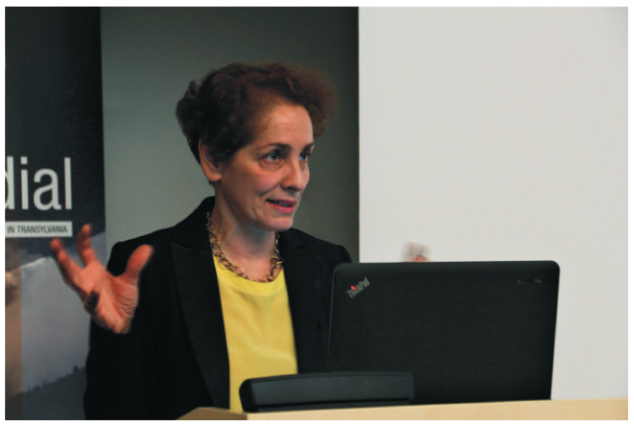 |
The Use of Other Media within Film as a Passage to Material Reality, Interview with Lúcia Nagib Ágnes Pethő, Acta Universitatis Sapientiae, Film and Media Studies, 2018In the brochure of the international conference, The Moving Form of Film: Exploring Intermediality as a Historiographic Method, that you organized in November 2017, at the University of Reading, UK, we can read the following bio- bibliographical note about you: “Lúcia Nagib is Professor of Film and Director of the Centre for Film Aesthetics and Cultures at the University of Reading. Her research has focused, among other subjects, on polycentric approaches to world cinema, new waves and new cinemas, cinematic realism and intermediality. Continue reading… |
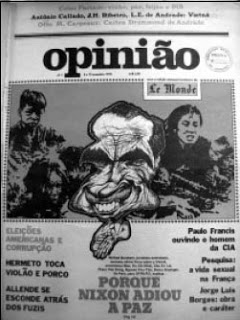 |
Film criticism, journalilsm and repression in the 1970’s/Crítica de cinema, jornalismo e repressão nos anos 70 Margarida Adamatti, Artcultura, 36, 2018While historiography on Brazilian press censorship under the military regime is extensive, film criticism censorship re-mains undebated. The aim of this paper is to analyze film criticism under censorship in the underground newspaper Opinião(1972-1977), with an special interest in strategies developed by critics so they could write about vetoed films. We stress how meaning was produced, how previous censorship influenced textual forms and what discursive strategies allowed Opinião to participate in the aesthetic and political debate about films. |
 |
Caminhos cruzados entre intermidialidade, star system e música no Ébrio de Gilda de Abreu Margarida Adamatti, Intexto, 42, 2018Em 1935, o tenor Vicente Celestino lançou a música O Ébrio. Aproveitando o grande sucesso alcançado, a canção foi transposta para o universo do teatro, do cinema, da literatura e da telenovela ao longo de 30 anos. O artigo toma a intermidialidade, o conceito de transposição e o star system como ferramenta de análise do filme O Ébrio de Gilda de Abreu. A partir da construção da persona de Celestino, na materialidade do filme, no eu lírico da canção e na representação da vida midiática do ator, o objetivo é demonstrar como a presença em cena do astro nas sequências musicais junto à transposição intermidiática se fazem presentes na forma cinematográfica. O estudo demonstra como a presença em cena do astro nas sequências musicais fornece um fator de compensação à ausência do hic et nunc. |
 |
André Bazin e a intermidialidade: por uma historicidade impura do cinema Pioneiro avant la lettre da intermidialidade, André Bazin não desprezou as possibilidades artísticas do diálogo entre o cinema e as demais mídias. Longe de uma postura purista, Bazin demonstrou como esses entrelaçamentos trouxeram uma inevitável historicidade ao cinema e a possibilidade de aprimoramento da forma fílmica. Num movimento pendular entre a noção de autoria e o elogio à criação anônima das artes, Bazin agregou a arqueologia das mídias ao debate do específico. Através da articulação entre a análise fílmica e o estudo do contexto, os artigos sobre a adaptação teatral e literária abrem-nos caminhos de pesquisa para abordagens intermidiáticas do cinema. A nossa proposta pretende decompor a metodologia baziniana e apresentar as disputas internas do campo cinematográfico em torno da autoria e do específico.
|
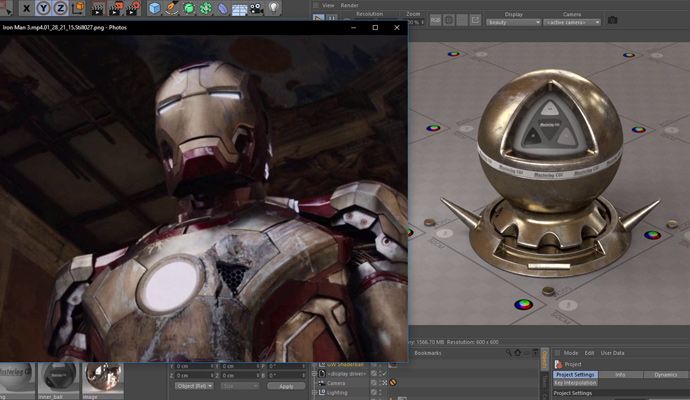 |
Layered encounters: mainstream cinema and the disaggregate digital composite Lisa Purse, Film-Philosophy, 22 (2), 2018, pp. 148-167. ISSN 1466-4615 doi: https://doi.org/10.3366/film.2018.0070The digital surface in cinema has, throughout its relatively brief history, been subject to a familiar “iconophobic” tendency, documented by Rosalind Galt (2011), to denigrate surface decoration as “empty spectacle” (p. 2). In early scholarship on computer generated (CG) images in cinema, the digital surface’s alleged seamlessness and “new depthlessness” frequently became an overdetermined nexus of loss: of material presence, of an indexical relation to the world and lived experience, and of the continuation of older traditions of narrative cinema. Today, digital visual effects sequences in mainstream cinema continue to be framed by film reviewers in negative terms: as variously lacking imagination, realism, narrative depth, and affective power. Digital visual effects and digital media scholarship have done much to reclaim the cultural significance of mainstream digital visual effects sequences and their capacity to speak to a rapidly evolving and increasingly encompassing digital media ecology. Yet the formal heterogeneity of this evolving period of mainstream aesthetic consolidation and experimentation with digital images, surfaces and spaces has yet to be fully acknowledged. This article seeks to contribute to this broader task by focussing on the mainstream cinematic history of the digital composite, and specifically those moments where it displays a particularly self-reflexive character. If the digital composite has traditionally been characterised by its attempt to totally erase signs of its composite nature, across the period of CG images’ proliferation in cinema an occasional figure emerges that seeks to do the opposite: a digital composite that formally fragments, foregrounds, and scrutinises the digital surfaces that constitute it. Drawing on scholarship on the computer image, digital media and the post-cinematic, this article will argue that these returns of the self-conscious digital composite speak meaningfully to their historical context.
|
 |
Considerations on the Musical Numbers of Brazilian Chanchadas Flavia Cesarino Costa, Significação: Revista de Cultura Audiovisual, São Paulo, Universidade de São Paulo. Escola de Comunicações e Artes, v. 45, n. 50, p. 179-203, julho-dezembro 2018. ISSN: 2316-7114. DOI: 10.11606/issn.2316-7114.sig.2018.138619This article comments on accounts by Irina Rajewski and Agnes Pethö on the intermediality in cinema and audiovisual production and discusses the use of intermediality as a critical category on the analysis of musical numbers of Brazilian chanchadas of the 1950s directed by Watson Macedo in the 1950s. Film researchers have worked on the connections between Brazilian chanchadas and popular theatre, radio, phonographic industry and Hollywood. The relationship between these distinct cultural practices have been discussed considering the film as the main point of discussion, but, according to Charles Musser, these musical numbers may be better understood inside the broader circuit of media and urban cultural practices. |
|
Playing at the Margins This audiovisual essay looks at the work of two musicians – José do Patrocínio Oliveira and Nestor Amaral. The two had successful careers in Brazilian radio and musical performance and also appeared in a number of Hollywood films of the 1940s. The essay’s strategy is to collect a number of José and Nestor’s marginal appearances and through juxtaposition, and in relation to a series of on-screen titles, to draw attention to the formal and political dimensions of the deployment of the pair. The intention is also playful, and unpicking the transnational trajectory of the two musicians uncovers surprising elements to this hidden history. (Link to full page, inc. text article, in title). |
|
 |
Luciana Corrêa de Araújo, Significação-Revista de Cultura Audiovisual, v. 45, 2018, p. 19-38. DOI: 10.11606/issn.2316-7114.sig.2018.138589
This article investigates activities at the Teatro Santa Helena, in São Paulo, during 1927, when this cineteatro was at the forefront of the programming strategies undertaken by the consortium of Metro-Goldwyn-Mayer and Empresas Reunidas, the largest exhibition chain in the city. Film practices and film reception are addressed, with special attention to mixed programs involving stage and screen attractions, to understand movie theaters as privileged spaces for intermedial relations between cinema, stage, music, and other artistic and cultural practices. |
2017
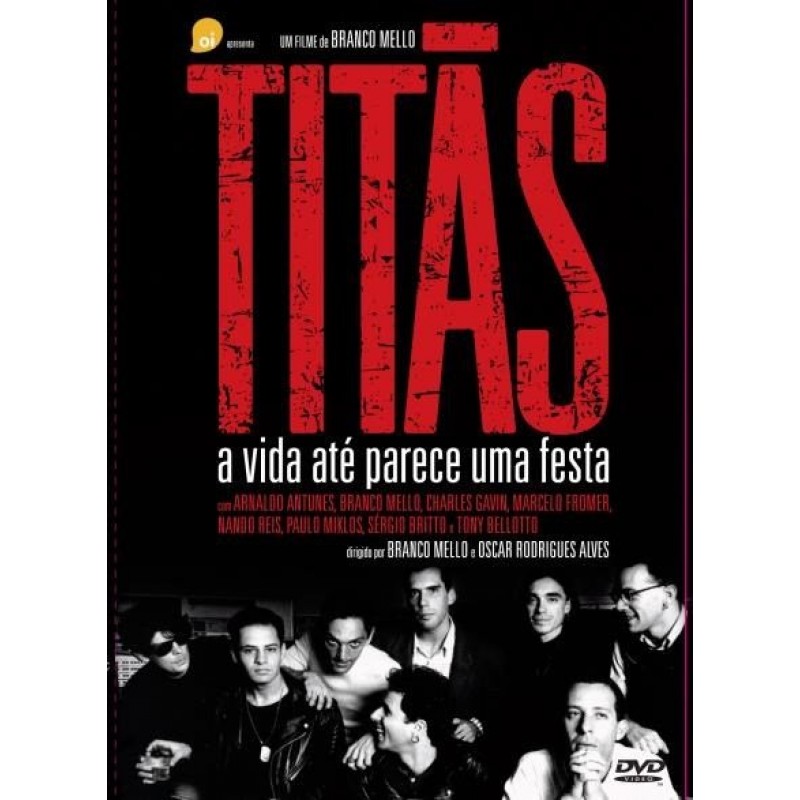 |
Between phonographic perfection and resistance: Titãs – life even looks like a party Lisa Purse, In: Elduque Busquets, A. (ed.) Contemporary Brazilian Music Film. University of Reading, Reading, 2017, pp. 91-98. ISBN 9780704915855This essay examines the aesthetic strategies at work in the Brazilian rock music documentary Titãs – A Vida Até Parece uma Festa(2008). In particular, I focus on the ways in which textural and haptic dimensions of the image are activated in order to invoke, reproduce, and frame the moment of live performance. The memorialization of the experience of live performance, for performer and audience, constructs an inherently intermedial cinematic experience which speaks to musical histories, issues of national musical identity and musical exchange, and cinematic music film traditions. |
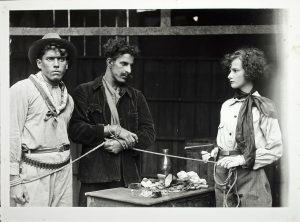 |
“A Role in Which the Work Is Not Completely Passive” Eva Nil, Miss Right Now (1927), and Women’s Work in Brazilian Silent Cinema The silent Brazilian film Miss Right Now (1927), produced by and starring Eva Nil, who also worked as a camera and laboratory assistant on the film, stands out as a powerful and rare example of a woman’s creative agency in early Brazilian cinema. The plight of this film also provides a means to consider the conditions of women’s on- and offscreen work, dominant models for female screen protagonists in 1920s Brazil, and negotiations between modern and traditional values within an emergent Brazilian star system. |
 |
A intermedialidade como narrativa histórica em Mistérios de Lisboa Lúcia Nagib, Aniki: Revista Portuguesa da Imagem em Movimento, 2017. DOI: 4. 10.14591/aniki.v4n2.339A produção cinematográfica volumosa de Raúl Ruiz já foi definida como um filme único e interminável devido ao notório desprezo do diretor por desfechos narrativos. Mistérios de Lisboa é seu filme mais longo, consistindo numa adaptação de 4h26min como filme e 6h como série televisiva do romance homônimo de Camilo Castelo Branco, composto de uma rede de estórias que se multiplicam ao longo de gerações. No entanto, todas essas estórias na série televisiva e a maioria delas no filme chegam a uma resolução lógica, indicando que a duração prolongada da obra se deve ao gênero escolhido, o folhetim literário combinado com a telenovela, e não ao fato de ser uma obra aberta. Defendo aqui a hipótese de que os procedimentos auto-reflexivos do filme, que questionam o dispositivo fílmico e sua posição hierárquica entre as outras mídias, trazem a estória para perto da realidade e da narrativa histórica ao criar brechas no enredo pelas quais se vislumbram a incompletude e incoerência da vida real. Neste contexto, as constantes transformações intermediais do filme funcionam como “passagens” para o real, pelas quais azulejos, teatros de papelão, desenhos e pinturas ganham vida e vice-versa, subvertendo discretamente a ideia de que a estória possa ter um único fim, ou um final qualquer. |
2016
 |
Tão longe é aqui e a música dos ruídos: aproximações teóricas sobre aspectos do som no cinema contemporâneo Kira Pereira, Suzana Reck Miranda, Rebeca – Revista Brasileira de Estudos de Cinema e Audiovisual, v.5, n.1, 2016. DOI: 10.22475/rebeca.v5n1.265No intuito de refletir sobre possíveis transformações dos papéis “tradicionais” da música e dos ruídos no cinema, este ensaio se debruça sobre o desenho de som do documentário Tão longe é aqui (Eliza Capai, 2013) a partir de um objetivo específico: observar em que medida os ruídos, no cinema contemporâneo, ao mesmo tempo em que escapam de um vínculo exclusivo com a verossimilhança, acabam operando funções que tradicionalmente são legadas à música de cinema. Para tanto, usaremos conceitos oriundos dos estudos da música no cinema narrativo ficcional como ponto de partida, embora nossa reflexão, conforme o leitor poderá notar, propositalmente esteja voltada a um exemplo contemporâneo e – a priori – não ficcional. |
 |
El vuelo del buitre: Ruy Guerra y la historia de las repeticiones Albert Elduque Busquet, 2016, La Furia Umana, 30. ISSN 2037-0431Probablemente la imagen más conocida del cine de Ruy Guerra sea el travelling circular sobre Norma Bengell en Os Cafajestes (1962). Jandir (Jece Valadão) y Vavá (Daniel Filho) planean hacer chantaje al tío de este con fotos de su novia Leda (Norma Bengell) desnuda en la playa. A tal efecto, engañan a la chica para que se quite la ropa, se la roban y se marchan en coche. Ella los persigue, sin éxito, hasta que Vavá sale del capó y, armado con una cámara, empieza a fotografiarla. Mientras Jandir conduce en círculos alrededor de la chica, encarcelándola, la cámara de Guerra se sitúa sobre el vehículo, virtualmente en la misma posición que la de Vavá, y como espectadores asistimos a un travelling circular de casi tres minutos y medio en torno al cuerpo desnudo de la mujer, abatida en la arena, rendida, tapándose infructuosamente. El movimiento termina con un plano congelado de ella, pidiendo piedad. Aunque la secuencia todavía incorporará algunas imágenes más (otro plano desde el coche alejándose de Leda, algunas tomas de sus prendas…), obviamente el núcleo se encuentra en ese travelling circular eterno, insoportable, sobre su cuerpo indefenso. |
| Still Brazil Stefan Solomon [in]Transition, 3 (3), 2016. http://mediacommons.futureofthebook.org/intransition/2016/still-brazilA video essay analysing the use of the freeze frame in two Brazilian films. (Link to text article in title and reference above). |
|
 |
“Materials Have Memories”: An Interview with Melissa Dullius and Gustavo Jahn (Distruktur) Stefan Solomon, Senses of Cinema, 2016Brazilian filmmaking duo Melissa Dullius and Gustavo Jahn began working together in 1999 in Porto Alegre, and since 2007 have been based in Berlin, operating under the title “Distruktur”. The two also have some experience in acting roles: Jahn is perhaps most recognisable from his appearance in O Som ao Redor (Neighbouring Sounds, Kleber Mendonça Filho, 2012), and Dullius appeared alongside him in Os Residentes (The Residents, Tiago Mata Machado, 2010). Since their earliest collaborations in Brazil, they have shot mostly in 16mm, and today maintain a strong interest in the materiality of their medium as part of the analogue film collective, LaborBerlin. After producing a number of shorts – as well as works that involve live performance and sound – Dullius and Jahn have recently completed their debut feature, Muito Romântico, which premiered in the Forum Expanded section of the 2016 Berlinale. It is a film that combines a punk sensibility with calculated risk-taking, consolidating the pair’s affinity for celluloid, as well as their ability to breathe life into the archive. I spoke with Distruktur about their practice as filmmakers, and their relationship to the materials of cinema. |
 |
A Cinema That Could Explode or Implode: Ana Vaz Discusses “Occidente” Stefan Solomon, MUBI Notebook, 2016The Brazilian director Ana Vaz is steadily building a portfolio of experimental works that address in equal share the lasting impact of the spread of empire, and the felt effects of the anthropocene. This summer, MUBI is screening Vaz’s 2014 short film, Occidente, a captivating work that deftly layers sound and image, taking aim at Portugal’s colonial legacy and strategically drawing past and present into fresh and unpredictable relations. I spoke with Vaz recently about her filmmaking process, and about the philosophical implications of her work. |
 |
Two Ways of Filming a Crisis: Brazilian Political Cinema Today Stefan Solomon, LOLA, 2016In the past few years, Brazil’s place in the media cycle has been divided between the enthusiastic and the embarrassing: on the one hand, the nation’s status as an emerging power among the BRICS group, and its soft diplomatic gestures as host of both the 2014 World Cup and the 2016 Summer Olympics in Rio de Janeiro; on the other, the massive anti-government demonstrations that accompanied those two sporting events, the worsening spread of the Zika virus, the country’s real economic stagnation after a period of continuous growth, and now the coup de grâce – this year’s political coup that has seen the impeachment and deposition of president Dilma Rousseff, amidst confirmations of pervasive corruption and bribery at various levels of the political class. It is a tale of dashed hopes and diminishing returns, in which the successive prophesies contained in the protestors’ hashtags – #NãoVaiTerCopa (“There Will Be No World Cup”) and #NãoVaiTerGolpe (“There Will Be No Coup”) – turned out to be false. |
 |
Paiva S, (2016). Cinema, intermidialidade e métodos historiográficos: o Árido Movie em Pernambuco Samuel Paiva, Significação: Revista de Cultura Audiovisual, v.43, n.45, 2016O artigo diz respeito à historiografia do cinema, procurando investigar a possibilidade de compreensão da intermidialidade como método historiográfico. Parte das proposições de Lúcia Nagib sobre “políticas da impureza”, por sua vez pautadas pela noção de “cinema impuro”, de André Bazin, cotejando-as com os “fenômenos intermidiáticos” apresentados por Irina Rajewsky e também com a “historiografia de metodologias” da intermidialidade nos filmes, tal como proposta por Ágnes Pethö. Como estudo de caso, considera a produção do cinema de Pernambuco, com maior interesse no longa metragem Baile perfumado (1996), embora referindo outras obras dos anos 1990 aos dias atuais. |
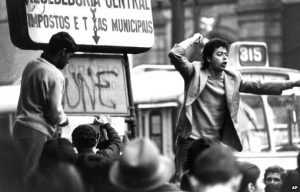 |
Um Aspecto da Tropicália: a Intermidialidade como Resposta ao Exílio Samuel Paiva, Rumores – Revista Online de Comunicação, Linguagem e Mídias, 2016, pp. 106-120Na transição das décadas de 1960 e 1970, artistas brasileiros relacionados ao Tropicalismo em campos midiáticos diversos foram obrigados a sair do Brasil por conta da ditadura militar. Em resposta à crise então instaurada na sociedade brasileira, os exilados, sobretudo os que se estabeleceram em Londres, na Inglaterra, estabeleceram entre si uma interação que envolvia suas produções artísticas, como uma forma de resistência simultaneamente estética e política. Assim, com foco de interesse voltado a tal produção, este artigo tem por objetivo um mapeamento inicial de obras artísticas brasileiras produzidas na condição desse exílio, procurando contribuir para a construção de um método historiográfico pautado pela perspectiva da intermidialidade. |
 |
The necessary amateur. Cinema, education and politics. Interview with Cezar Migliorin Albert Elduque Busquet, Cinema Comparat/ive Cinema, IV (9), 2016, pp. 36-42Interview with Cezar Migliorin, one of the coordinators of the cinema project in Brazilian schools Inventar com a Diferença. We talk about their pedagogical methods, focused on sensitive research with images rather than on the notions of representations, and we discuss the political aspect of cinema made in communities, both in schools and indigenous groups. Working collectively and cinema as a non-professional activity emerge as strong bonds between these works and the manifestos of the New Latin American Cinema. Finally, we deal with the issue of montage, a key element when thinking about political cinema based on the massive production of images taking place today. |
| Hunger and Rotten Flesh: Cinema Novo, Pasolini, Eisenstein Albert Elduque Busquet[in]Transition, 3 (3), 2016. http://mediacommons.futureofthebook.org/intransition/2016/hunger-and-rotten-flesh Video essay for the journal [in]Transition about the concepts of hunger and consumption in Brazilian Cinema Novo, considering its dialogues with Pasolini and Eisenstein. (Link to text article in title and reference above). |
|
 |
Chanchada e intermidialidade: alguns comentários sobre Aviso aos Navegantes (1950) Flavia Cesarino Costa, Pós, Revista do Programa de Pós-Graduação em Artes da Escola de Belas Artes da Universidade Federal de Minas Gerais, Brazil, Volume 6 (Number 12), 2016, pp. 87-98Neste artigo abordamos o filme Aviso aos Navegantes, dirigido por Watson Macedo em 1950 para a produtora carioca Atlântida Cinematográfica, considerando as formas particulares de inter-relação do cinema brasileiro sonoro da primeira metade do século 20 com outras práticas culturais. Procuramos utilizar a intermidialidade como categoria crítica, acolhendo a natureza híbrida do cinema brasileiro como fator explicativo que permite o entendimento das comédias musicais como inseridas num conjunto mais amplo de diversas práticas culturais. |
 |
Non-Cinema, or The Location of Politics in Film Lúcia Nagib, Film-Philosophy, Volume 20 (Issue 1), 2016, pp. 131-148Philosophy has repeatedly denied cinema in order to grant it artistic status. Adorno, for example, defined an ‘uncinematic’ element in the negation of movement in modern cinema, ‘which constitutes its artistic character’. Similarly, Lyotard defended an ‘acinema’, which rather than selecting and excluding movements through editing, accepts what is ‘fortuitous, dirty, confused, unclear, poorly framed, overexposed’. In his Handbook of Inaesthetics, Badiou embraces a similar idea, by describing cinema as an ‘impure circulation’ that incorporates the other arts. Resonating with Bazin and his defence of ‘impure cinema’, that is, of cinema’s interbreeding with other arts, Badiou seems to agree with him also in identifying the uncinematic as the location of the Real. This article will investigate the particular impurities of cinema that drive it beyond the specificities of the medium and into the realm of the other arts and the reality of life itself. Privileged examples will be drawn from various moments in film history and geography, starting with the analysis of two films by Jafar Panahi: This Is Not a Film (In film nist, 2011), whose anti-cinema stance in announced in its own title; and The Mirror (Aineh, 1997), another relentless exercise in self-negation. It goes on to examine Kenji Mizoguchi’s deconstruction of cinematic acting in his exploration of the geidomono genre (films about theatre actors) in The Story of the Last Chrysanthemums (Zangigku monogatari, 1939), and culminates in the conjuring of the physical experience of death through the systematic demolition of film genres in The Act of Killing (Joshua Oppenheimer et al., 2012). |
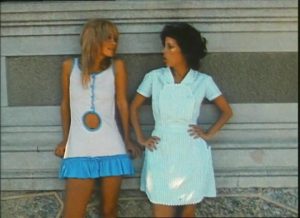 |
Dois movimentos como primeira aproximação aos filmes da Belair Albert Elduque Busquet, VI Encontro Anual da AIM (Associação de Investigadores da Imagem em Movimento), 2016, pp. 165-175Esta comunicação estuda um plano do filme Cuidado Madame (1970), realizado por Júlio Bressane na produtora Belair. Nesta imagem, a câmera movimenta-se num apartamento carioca enquanto ouvimos duas marchinhas de Lamartine Babo. Partindo da relevância desta música, queremos explorar como a melodia encarna a liberdade das empregadas protagonistas do filme e, ao mesmo tempo, ver como imagem e som podem, por causa da separação entre eles, afirmar sua fisicalidade e terminar completamente entrelaçados. Partiremos da análise das imagens e músicas do filme, assim como de conceitos e ideias de Ismail Xavier, Ágnes Pethő e Roland Barthes. |
2015
 |
Que coisas nossas são estas? Música popular, disco e o início do cinema sonoro no Brasil Suzana Reck Miranda, Significação: Revista de Cultura Audiovisual, v.42, n.44 , 2015. DOI: 10.11606/issn.2316-7114.sig.2015.103701Este artigo destaca elementos históricos e estilísticos que cercam o filme Coisas Nossas (1931), apontado como o primeiro longa-metragem musical brasileiro ‘inteiramente sincronizado’ com o uso do sistema vitaphone. Interessa-nos, sobretudo, o seu repertório musical. Observaremos possíveis ligações dos estilos e dos intérpretes com a dinâmica da indústria fonográfica do período, na tentativa de compreender o que, naquele momento, foi tomado como sendo as “nossas coisas”. |
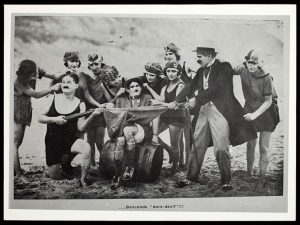 |
Augusto Annibal quer casar!: teatro popular e Hollywood no cinema silencioso brasileiro Luciana Corrêa de Araújo, Alceu, 16 (31), 2015, pp. 62-73A partir da pesquisa sobre a comédia Augusto Annibal quer casar! (1923), este artigo procura analisar as relações existentes, no período do cinema silencioso, entre a produção cinematográfica brasileira, o cinema hollywoodiano e o teatro popular, investigando também as conexões com outras práticas culturais e setores da atividade cinematográfica. |
